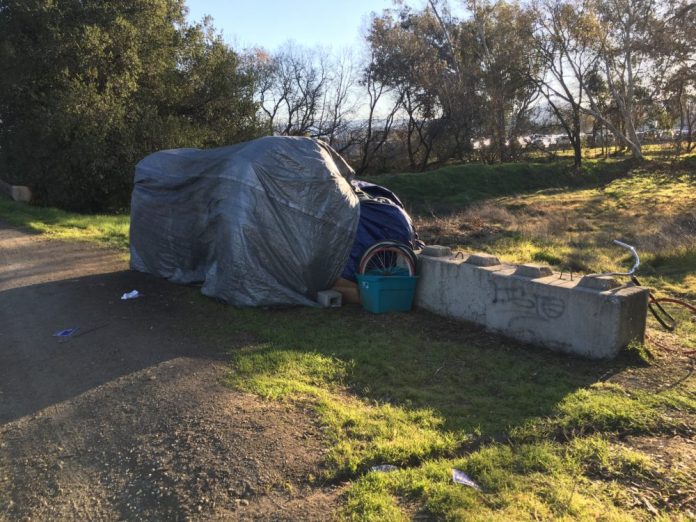The homeless population in Gilroy continues to grow, and the City Council has responded by giving more money for police actions.
The additional funds to the Gilroy police department will divert more officers to respond to what authorities call “‘quality of life calls.”
The 2017 Homeless Census and Survey identified 722 homeless people in Gilroy out of 7,394 homeless people in Santa Clara County. Gilroy reported the second highest homeless population in the county behind San Jose. A new census was conducted in January 2019, but results have not yet been released.
A presentation was given to the Gilroy City Council Feb. 26, 2018 that resulted in $137,000 in funding divided among the police department, the city attorney’s office and the public works department. The council heard another report March 18 from Police Chief Scot Smithee.
Jan Bernstein-Chargin, president of Gilroy’s Compassion Center, said that more police response isn’t the answer to Gilroy’s problem. The Compassion Center has been working with other municipalities to develop alternative response programs, she said.
Bernstein-Chargin said Gilroy needs more creative options to get people off the streets and our of the watersheds.
Chargin told the Dispatch, “Let’s get people off the street—then we don’t have to worry about how to arrest people for being on the street.”
She said the increased police and prosecution of trespassing, vagrancy and public nuisance was not the fault of the police department and district attorney, but rather came at the council’s direction as the outcome of public pressure.
“When you have a hammer, everything looks like a nail,” she said.
Chargin said the city was about to experience an influx of people who are homeless after the family shelter closed for the season on March 15 and the Armory is set to close April 15.
Smithee said calls to his department about homeless individuals who may be acting as a public nuisance, drunk in public, vagrant, trespassing, or similar city and state code violations, are considered “quality of life calls” by the department. If these kind of acts are committed by an individual, police call it a “quality of life” crime.
The 2018 data showed the highest number of homeless-related calls to the police department. “The statistics reveal quality of life crimes continue to increase,” said the staff report. “The pilot project has resulted in more officer-initiated activity surrounding quality of life crime and has provided additional police resources to address community generated calls for service related to quality of life issues.” The staff report also said new state laws have hindered the city’s response to homelessness.
Smithee told the council that the calls were relating to individuals, “affecting the quality of life of our citizens and our businesses and town.” Police responses to “quality of life” incidents rose from 933 in 2017 to 1799 in 2018. He also there has been an increase in proactive calls, which are in response to concerns from a business owner about someone who is homeless.
The huge increases in both categories, Smithee told the council, that it can be attributed to the designated officers that now respond to the calls and the community outreach the department has been doing to tell businesses and residents what calls can be made about.
“My belief is the more we educate people and the more people understand what is something that we can deal with from a police prospective and what is not, and how do you report that and when is it appropriate to report that, that we’ll probably continue to see those numbers continue to increase in 2019,” said Smithee. “Even if our total number of homeless goes down, which we don’t know at this point.”
The City Attorney’s office was given $50,000 in February 2018 to prosecute so-called “quality of life” crimes. The city attorney prosecutes city code violations at the county court in Morgan Hill. Smithee told the council that the city’s previous policy was to have people appear in court the same day with community support programs available at the hearing. If the person being charged accepted community support, the city would drop the charges. That policy has since changed.
Smithee said there were repeat offenders who attempted to take advantage of the city’s system. “After doing that for a while people figured out that was the routine, so we had people that were doing it again and again and again, so we decided we were going to try a different approach and we were not going to dismiss those cases and we were going to move those cases through the criminal justice system up to and including going to trial if that became necessary.”
Now, because of the large increase in homeless-related crimes, the city attorney and police chief were asked to have a meeting with the county Superior Court judge who had been hearing the cases. The large influx left county resources stretched thin. Smithee told the council that the City Attorney’s office and police department are working on new ways to prosecute the crimes, so that repeat offenders did not put a heavy burden on the prosecutorial resources.
One of the options Smithee discussed, was having repeat offenders appear in court for multiple charges after a certain threshold was reached.













